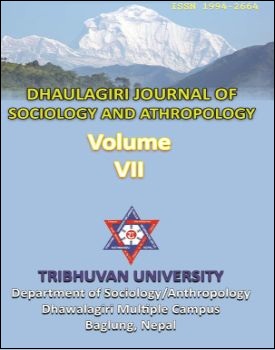Religious Culture and Medicinal Plants: An Anthropological Study
DOI:
https://doi.org/10.3126/dsaj.v7i0.10443Keywords:
Religious culture, medicinal plants, Brahmin/ChhetryAbstract
This study is based on primary data collection from the field from January 2011 to September 2013 to satisfy the query about the relation between religious culture and the medicinal plants. This study was carried out in Brahmin/ Chhetry dominated community of Baglung district of western development region of Nepal. The data were collected by using participant observation and interview. From this study it is found that, Brahmin/Chhetry use 48 plant species in their ritual, festivals and ceremony. Similarly they use 8 species in their religion. This entire plant species have important medicinal value. This plants species are necessary to complete their rituals, festivals, ceremony and religion but most of them have not knowledge about the medicinal value of these practicing plant species in their daily life. The answer of respondent is that, these plants are necessary for them because their ancestors use the plants but why they used the plants is unknown for them. This situation reflects that though the knowledge of medicinal value of the plants has vanished, it is still practiced on their religious culture.
DOI: http://dx.doi.org/10.3126/dsaj.v7i0.10443
Dhaulagiri Journal of Sociology and Anthropology Vol. 7, 2013; 197-224




